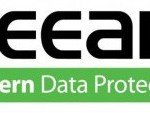During the first European Tech Field Day Extra (at VMworld EU in Barcelona) one of the companies was Veeam with an interesting session. Veeam does not need any introduction because it’s well know both in the data protection world and in the virtualization ecosystem.
There were Doug Hazelman (VP or Product Strategy and Chief Evangelist at Veeam Software), Rick Vanover (Product Strategy Specialist and Community Manager at Veeam Software) and Luca Dell’Oca (EMEA Evangelist at Veeam).
Of course one of the session’s topic was about the Veeam Availability Suite, but the main theme was how Veeam solves common issues caused by backup.

In first part Luca has explained a new feature of next product’s version: Backup I/O Control useful to reduce the storage impact of a backup job.
This feature is like an automated intelligent load balancing on steroid (using the Veeam definition), or (using a VMware comparison) a QoS feature applied to the backup jobs. The name itself give an idea on what it does (initial project name was “slowdown” that explain how it works), like the Storage I/O control or Network I/O control in VMware vSphere.
Mainly it apply a throttling to backup jobs when their are impacting too much primary storage performance (measuring its latency), to avoid negative behavior on the virtual environment.
There are two different storage latency thresholds: one just tell when new jobs must be postponed (by default 20ms), the second one just tell when running backup jobs must be slow down (30ms is the default).
On Enterprise edition those thresholds are globally, on Enterprise Plus those thresholds could be set at datastore level. Note that this feature works both in vSphere and Hyper-V environments, the difference is just how data are collected: on vSphere it use the native performance data (each 20 sec) and on Hyper-V they are using a custom tool.
This solution make possible run a backup job also in production hours (maybe using storage snapshots to minimize the VMware snapshots duration) or simple can reduce the storage impact during the backup jobs where maybe some maintenance operations could also be planned.
After this session, Rick has introduced an interesting new feature (available in all edition) called Snapshot Hunter, useful di identify pending VMware snapshots.
This issue is common for each backup software that use the VADP API provided by VMware and the reason in the poor implementation of the SDK that has limited error reporing functions (and all backup software must use this SDK to be VMware compliant).
It can happen that some snapshots can remain on the vSphere side, sometime visible (and easy to delete), sometime not visible and a consolitidation (introduced from vSphere 5.0) may be need to fix this issue… but may not work in all cases. Actually Veeam report that the top support issue of VMware backup is failed snapshot consolidation.
With Snapshot Hunter after each backup job a new check (enabled by default) will be used to identify possible issue in VMware snpashots and also to fix them using VMware KBs. For sure this will help VMware’s administrators and simplify their life.
In the final session, Doug has introduced Endpoint backup FREE (a big announce from Veeam), a tool that can solve the problem on how handle data and system protection and recovery on end point systems (actuall is limited only to some Windows version but is an important first step).
It’s really impressive how seems simple and designed for IT pro mainly for laptop and desktop Windows (but note that can work also on Windows Server in order to manage the remaining physical infrastructure that has not been virtualized).
It’s also curious that it is completly free and Doug has confirmed that there will remain always a free edition of this, also in the future (like Veeam ZIP that is the free edition of Veeam Backup & Replication). This does not exclude any future product based on this (the same has happen with FastSCP, that has become Veeam Backup).
The interesting aspect is that Endpoint Backup does not require Veeam Backup & Replication or any other infrastrusctual server: it’s all at end point level and just write to a target that could be:
- Local drive or removable media
- Shared folder (CIFS or SMB)
- Veeam Repository
Note that it write standard Veeam backup files on the targed, so could be possibile, using a Veeam Repository apply Backup Copy Job for vaulting (for example). But actually the restore must be initiated from the endpoint.
One really interesting feature is the bare metal restore option, where it’s possible build a bootable ISO and it’s also possible add to this ISO custom or additional driver (in case the restore is on different hardware).
About the data protection it’s possible schedule how often (also each hour, if you want) and the retention days (like in a standard backup jobs). There is also a “Backup I/O Control” feature to avoid making backup during the user usage of the end point.
Of course several features like Wake-up On LAN, mobile device backup, roaming users (the end point must reach end-to-end the target, so actually for external users a VPN is needed), … are not implemented in this free edition.
But could be really interesting see the evolution of this product and maybe if it also will become compatible with the Veeam Cloud Connect to provide end point backup as a service.
Disclaimer: I’ve been invited to this event by Gestalt IT, but I’m not compensated for my time and I’m not obliged to blog. Furthermore, the content is not reviewed, approved or published by any other person than me.












